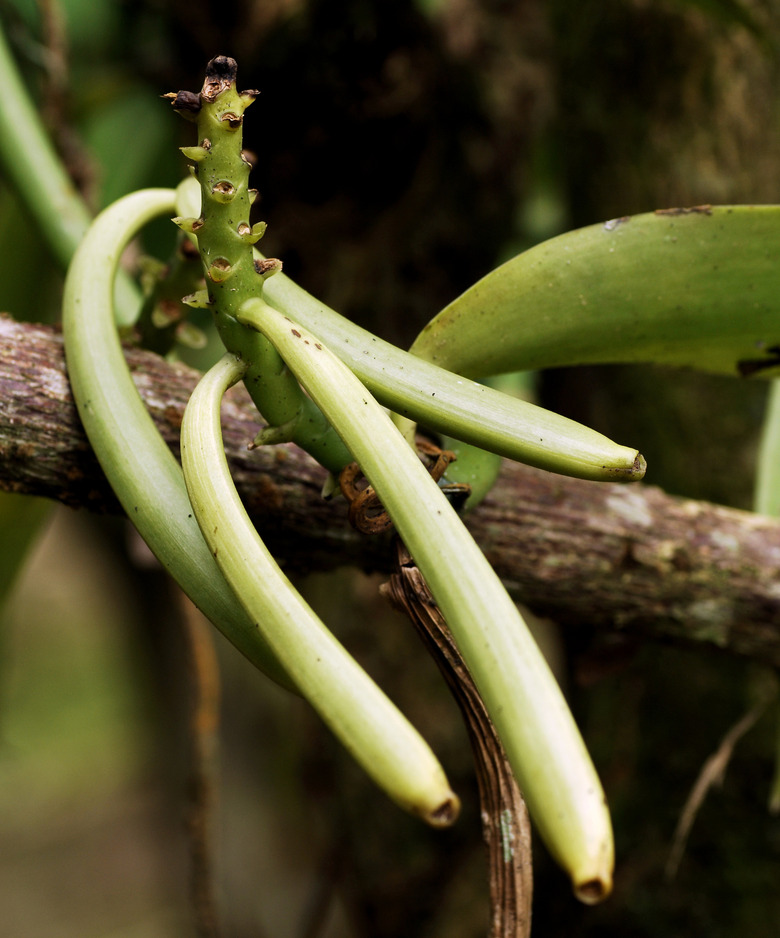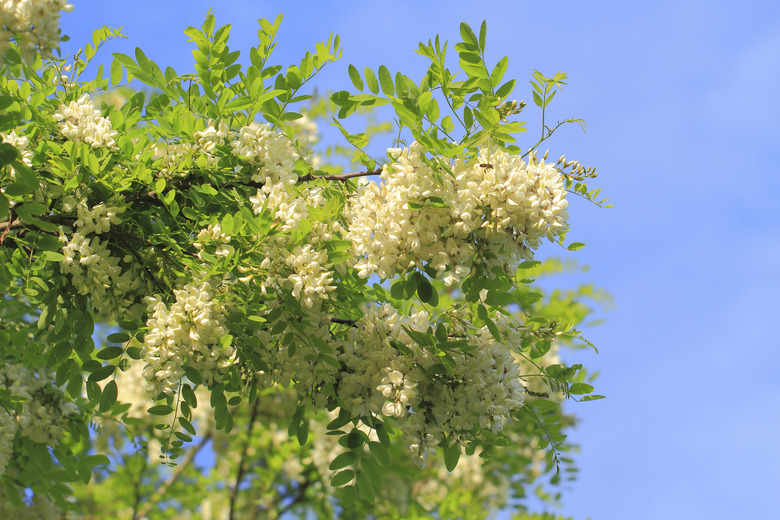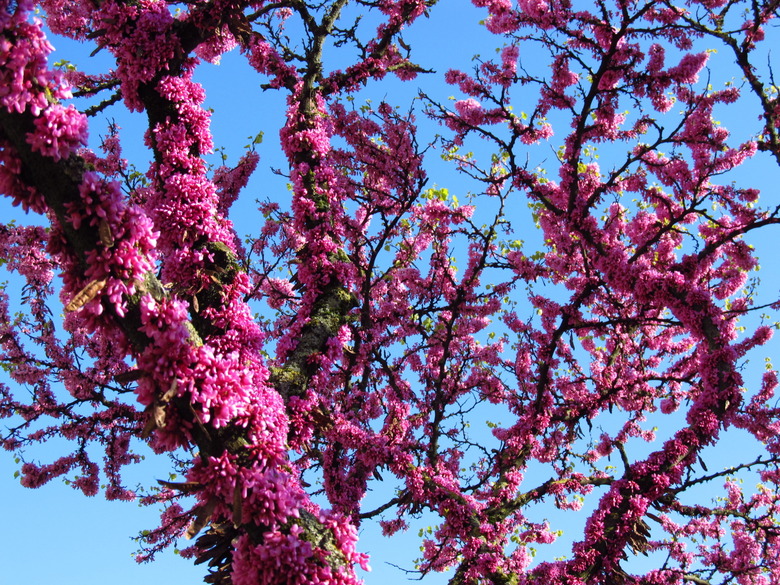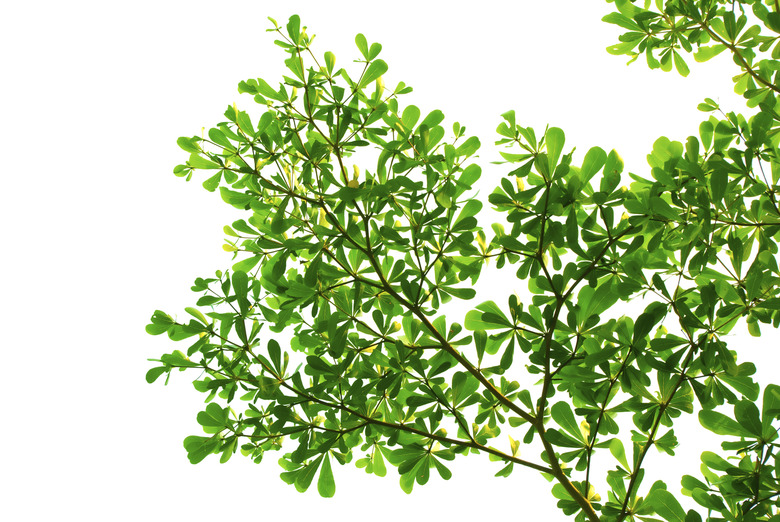Trees With Pods
When pods ripen on trees they offer an extra decorative bonus to a tree. There are 17 genera of trees found in the United States that bear their seeds or fruit inside of pods, notes the Old and New website. These 17 genera make up roughly 30 tree species, including valuable timber trees. Except for the yellowwood tree, all of these trees with pods have compound leaves that have many leaflets and are generally fern-like in appearance and texture.
Black Locust Tree
Black locust trees are usually found growing in open areas, fields, woods and along streams. The black locust is a medium-sized tree that can reach up to 80 feet tall, according to the Fairfax County Public Schools website. The tree's oval-shaped leaves are pinnately compound, meaning a single leaf has from 7 to 19 leaflets on one main stem. It has light gray bark that is deeply furrowed and a trunk that is 1 to 2 feet wide. The black locust tree's numerous small flowers are pear-shaped and grow in droopy clusters. Fruit, which develops when flowers become pollinated, grow in brown pods. These pods remain attached to its tree in winter with each pod containing as many as 14 seeds.
- When pods ripen on trees they offer an extra decorative bonus to a tree.
- The black locust is a medium-sized tree that can reach up to 80 feet tall, according to the Fairfax County Public Schools website.
Redbud Tree
Redbud trees have dark brown bark with an inner, orange bark that peeks through the outside layer of bark. Because redbud's bark is thin, it can become easily damaged by any mechanical device such as weed eaters, notes the University of Arkansas. The tree's almost pine-green leaves are rough and heart-shaped. In fall they turn into an attractive yellow or yellow-green color. Redbuds produce stunning rosy-magenta blooms in tiny bundles of florets on their zigzagging stems. The plant's fruit or small brown seeds grow in pods located along stems 2 to 3 inches long. These flat pods, which resemble pea pods, change from green to purple in October.
- Redbud trees have dark brown bark with an inner, orange bark that peeks through the outside layer of bark.
Kentucky Coffee Tree
The Kentucky coffee tree is a large round tree and a member of the legume family. It has a short trunk that divides into larger branches, ending in fat, twisted twigs. The tree's leaves are somewhat oval and lack marginal teeth. In fall and winter this tree can mostly be recognized by its large leaf scars. Leaves appear in late spring and greenish-white flowers bloom in May. This tree's fruit is contained within a thick pod that has a sticky pulp. At maturity the seeds are olive-brown and measure ½ to ¾ inches wide, according to the University of Illinois.
- The Kentucky coffee tree is a large round tree and a member of the legume family.
- Leaves appear in late spring and greenish-white flowers bloom in May.
- This tree's fruit is contained within a thick pod that has a sticky pulp.
Yellowwood Tree
The yellowwood, also known as the American yellowwood or Virgilia tree, does well in many types of soils and can tolerate an exceptionally high pH soil, says Winona State University. This pod-bearing tree has smooth bark, able to hide a bright yellow wood that can be used to produce yellow dye. The yellowood has fragrant, showy, white, clustered flowers, although these trees may not bloom each year. Its fruit is a bean-like, flat pod that develops in late August and then ripens in fall.



